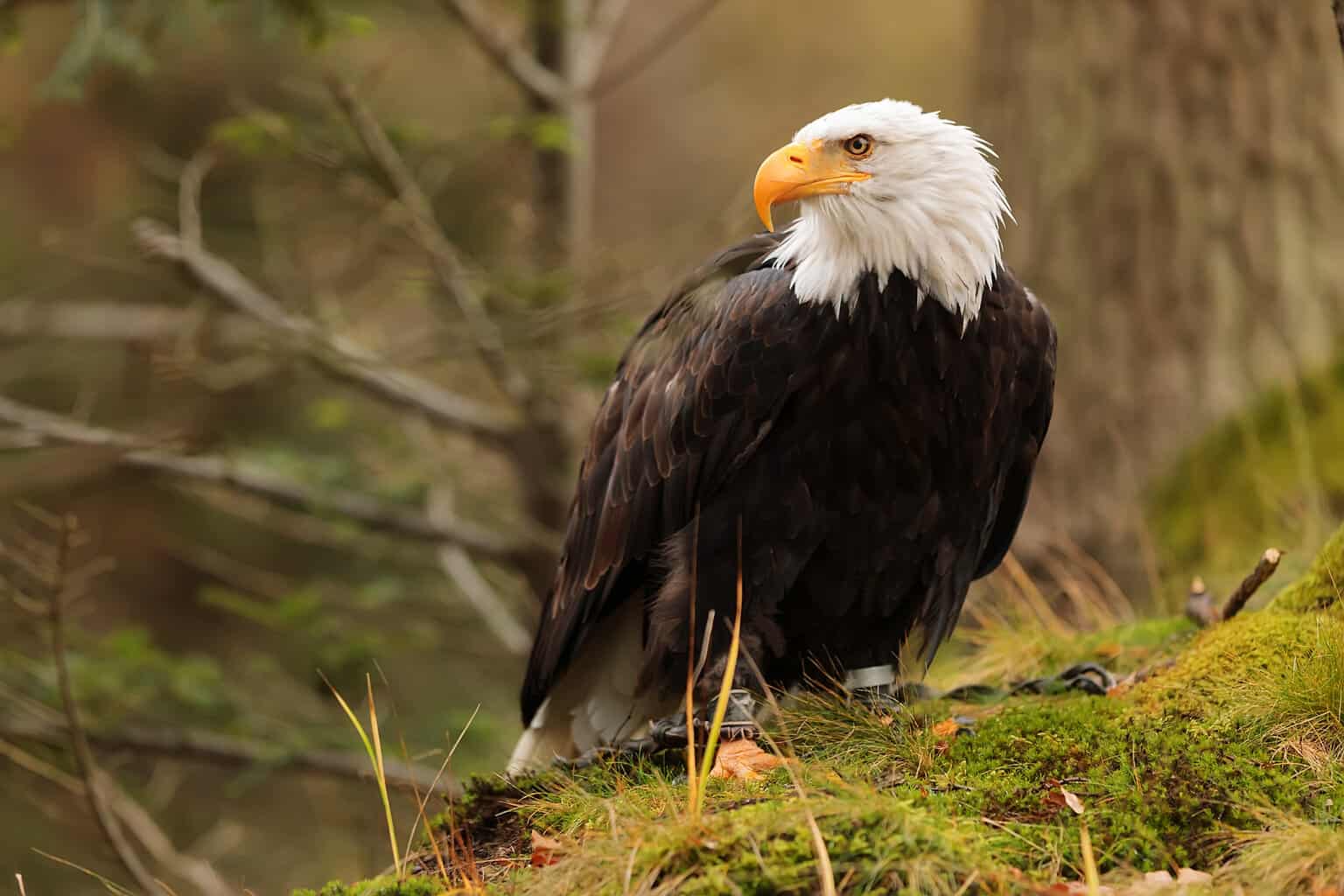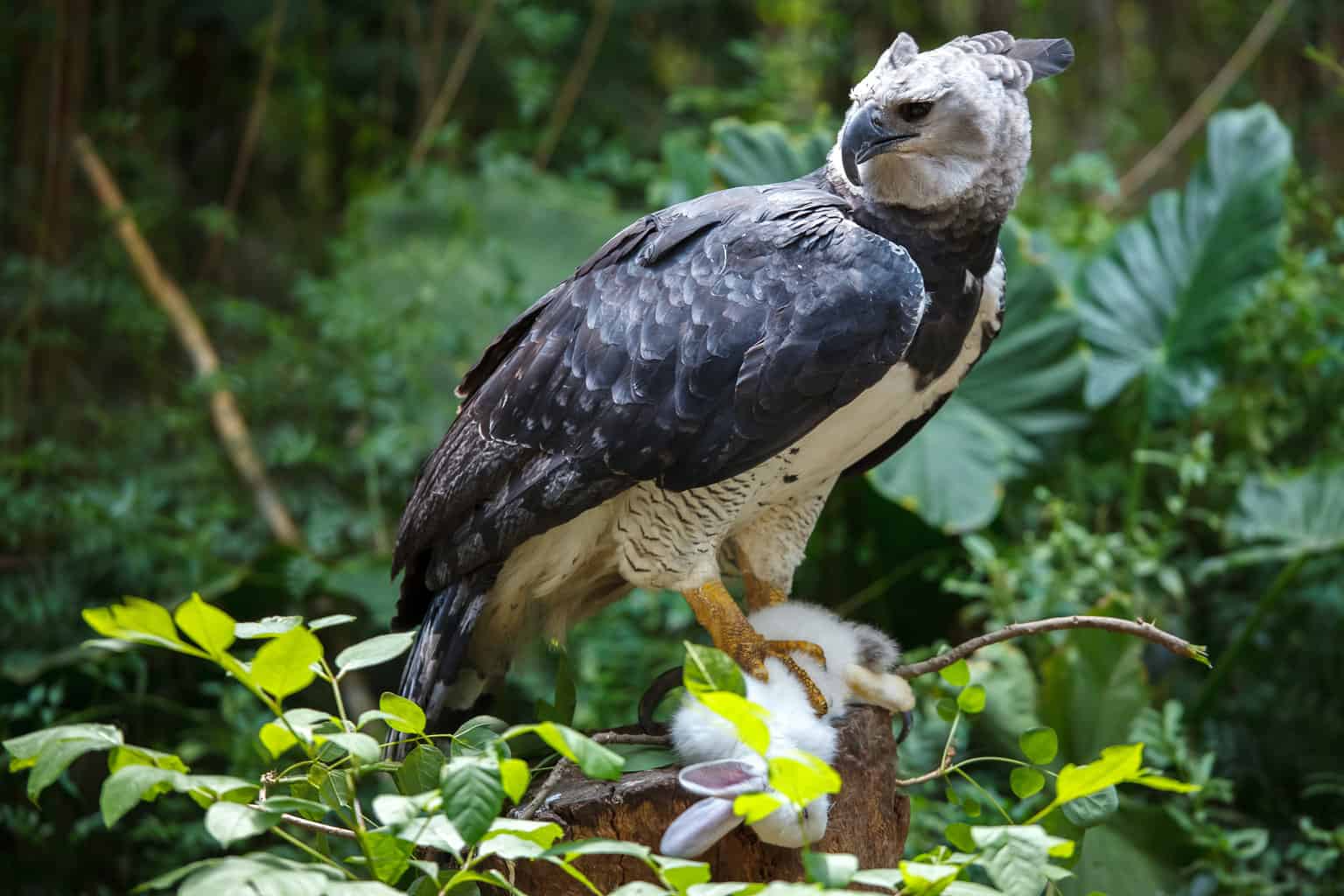Eagles are fascinating for those with a keen interest in birds. These large birds of prey live in many different parts of the world, but all are typically apex predators and high up, if not at the very top of, the food chains where they nest.
The bald eagle and harpy eagle are both important eagle species, and comparing and contrasting these two species can help us gain a deeper insight into these amazing birds.
What is a Bald Eagle?

American Bald eagles, Haliaeetus leucocephalus, are, along with golden eagles, one of two eagle species found in North America.
What is a Harpy Eagle?

The harpy eagle, Harpia harpyja, lives in the emergent layer of rainforests, from Mexico through Central America and into South America as far south as Argentina.
Key Differences Between Bald Eagles and Harpy Eagles:
Bald eagles and harpy eagles have several key differences, making it difficult to confuse them.
Where They Are Found
The first thing to note is that you will never be birdwatching anywhere bald eagles and harpy eagles are present since their ranges do not overlap.
As mentioned above, the bald eagle lives in North America, while the harpy eagle lives in Mexico and Central and South America.
Both are forest birds that can be found perching in trees. But the bald eagle haunts temperate forests and areas near large bodies of open water with an abundant food supply and old-growth trees for nesting.
On the other hand, the harpy eagle is a bird found in the rainforests of the neotropics, where it perches on emergent trees looking for prey.
Size & Weight
While these two eagles will never be found together, it is still interesting to see how they compare in size, weight, and other characteristics.
Bald eagles:
- Length: 70–102 cm (28–40 in)
- Weight: 3 to 6.3 kg (6.6 to 13.9 lb)
- Wingspan: 1.8 to 2.3 m (71 to 91 in)
Harpy eagles:
- Length: a median of 98.5cm (39 inches)
- Weight: a median of 5.95kg (13 lbs)
- Wingspan: 176 to 224 cm (69 to 88 in)
Both harpy and bald eagle females are much larger than males.
Appearance and Plumage
The bald eagle has an evenly dark brown body, a striking white head (that gives it its name), and a white tail. Its tail is moderately long and slightly wedge-shaped.
The harpy eagle’s upper side is covered with slate-black feathers, and the underside is primarily white, except for the feathered tarsi, which are striped black.
This bird’s white belly and double-crested gray head are separated by a broad black band across the upper breast.
The upper side of the tail is black with three gray bands, while the underside is black with three white bands.
So these two birds are strikingly different in appearance.
What They Eat
Bald eagles are opportunistic carnivores and consume a wide range of prey, such as fish (which typically makes up over half of their diet), other birds, small mammals, and occasionally other creatures, such as reptiles, amphibians, or invertebrates along coastlines.
On the other hand, harpy eagles mainly prey on mammals. Sloth and monkey species typically make up a high proportion of their diets.
So these two birds are also very different in what they mostly eat.
Flight & Behavior
There are other apparent differences between these two birds. For one thing, bald eagles fly a lot. They can reach speeds of 35–43 mph when gliding and flapping, about 30 mph while carrying fish, and when diving can reach speeds of 75–99 mph.
Harpy eagles can reach flight speeds of 50 mph, though they do not spend as much time on the wing and tend to perch more, swooping down to catch their prey from vantage points in the trees.
Bald eagles also often respond to the changing seasons by migrating south from northern areas to places where the waters are unfrozen. In contrast, harpy eagles are resident year-round in their neotropical homes. Unfortunately, this makes them even more vulnerable to human-caused mortality and habitat loss.
Is a bald eagle larger than a harpy eagle?
The bald eagle is smaller than a harpy eagle in length, wingspan, or weight.
Though the bald eagle is one of the largest birds in North America (the golden eagle is of a similar size), there are a couple of birds with wider wingspans – the American white pelican and the Californian condor.
Globally, bald eagles are not one of the top five largest eagles by length, weight, or wingspan. Harpy eagles are the second largest eagle in the world in total length and the third largest by body mass.
Is the harpy eagle the largest eagle?
The harpy eagle is one of the largest eagles in the world. But in length, it is outstripped by the Philippine Eagle, which has a median total length of 100 centimeters, or 39 inches. But it is larger than the wedge-tailed eagle, Steller’s sea eagle, and the crowned eagle, the others in the top five.
In body mass, Steller’s sea eagle tops the list, followed by the Philippine eagle and only then by the Harpy eagle. After the harpy eagle, the white-tailed and martial eagle are the others in the top five list.
By median wingspan, the largest eagle is the white-tailed eagle, followed by Steller’s sea eagle, the wedge-tailed eagle, the golden eagle, and the martial eagle, as reported in ‘Raptors of the World.’
Is a harpy eagle stronger than a bald eagle?
A bald eagle has a grip strength of around 400 pounds per square inch, and these birds can lift a weight of about five pounds.
But the Harpy eagle possesses the largest talons of any living eagle and has been recorded lifting prey equal to their body weight. They are said to be able to exert more than 530 pounds of pressure with their powerful grip.
Is a harpy eagle stronger than a golden eagle?
However, the golden eagle might be even stronger than the harpy since golden eagles are said to exert a staggering 750 pounds of crushing power per square inch.
Which eagle is the strongest?
The harpy eagle is often described as one of the strongest eagles in the world, though several others, including the golden eagle, can certainly give it a run for its money.
Determining which eagle is the largest or the strongest is not always easy because not everyone agrees on how to measure these two attributes. Should we measure size by length, weight, or wingspan? Should we look at grip strength or weight-carrying ability when measuring strength?
Fortunately, these birds will never be pitted against one another, so it does not matter which bird ‘takes the crown.’ But by comparing eagle species around the world, we can learn more about these amazing descendants of the dinosaurs and gain an even deeper appreciation of these amazing birds.

